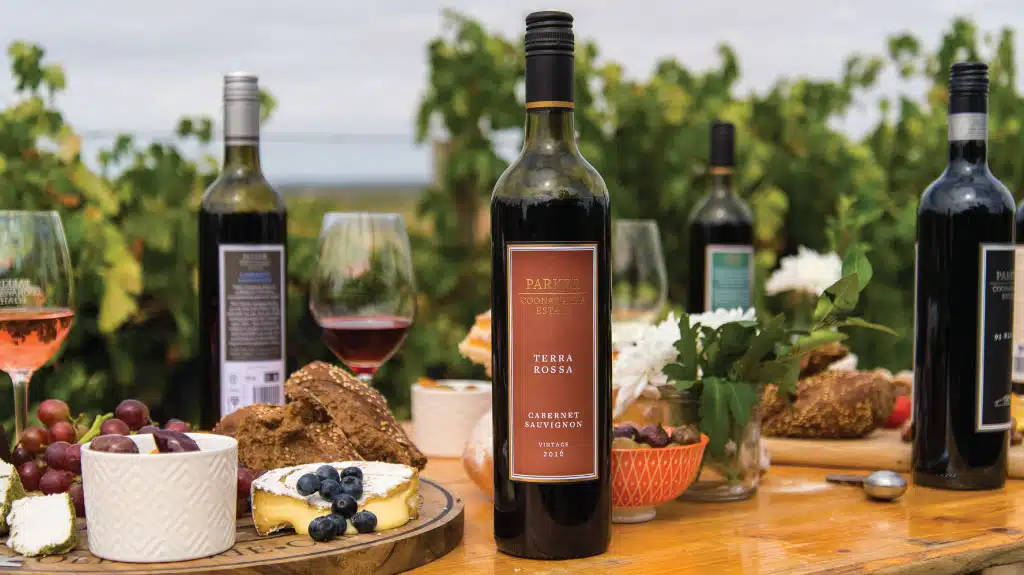The Limestone Coast, South Australia

The Limestone Coast wine zone is located in South Australia. It is not only spectacular, but also home to some of the country’s finest wines. In this article we explore how its unique characteristics shine through in its wines. We also highlight one particular wine which we think encapsulates the very essence of the Limestone Coast.
What makes the Limestone Coast zone special for growing wine?
The Limestone Coast wine zone is known primarily for its cool climate. The Southern Ocean provides a heavy influence, keeping daytime temperatures cooler than they would be otherwise. Grapes take longer to ripen in cooler climatic conditions, preserving acidity and leading to crisp, tart flavours.
The limestone from which the zone derives its name was laid down during the break-up of Gondwanaland millions of years ago, when Australia and Antarctica drifted apart. The whole area was subject to sedimentary infilling along with large areas of sand dune formation. Subsequently stranded by volcanic uplifting of the land, this resulted in free draining soils, perfect for growing grapevines.
Dotted with hills and valleys, different soil types and microclimates, the Limestone Coast grows wines which are unique to the area in terms of their flavour profiles and complexity. From full bodied cabernet sauvignon to light and refreshing pinot grigio, this region has something for every palate.
What makes Australian winemakers different?
In less than 200 years, Australia has developed wine production to rival the well established and long-historied wine regions of the Old World. South Australia in particular produces more than half of all Australian wine. A combination of excellent climate and distinctive geology has a large part to play in this.
Confidence in the vines and the terroir has grown considerably as South Australian wines have developed a reputation for quality, regionally-specific wines. Australian winemakers are always prepared to change the way they do things, whether it’s moving to more sustainable viticultural methods or embracing new technology. And Limestone Coast winemakers have an array of microclimates and terroirs to work with. This allows them to focus on drinkability with an eye to producing exceptional wines with unique flavours and styles.
Parker Coonawarra Estate Terra Rossa Cabernet Sauvignon
Terra Rossa Cabernet Sauvignon by Parker Coonawarra Estate is named after the distinctive “terra rossa” soil of the Coonawarra region. (Coonawarra is one of the six wine regions of the Limestone Coast zone which have received appellation as Australian Geographical Indications.) Here, the soil comprises red clay over limestone, which imparts unique flavours and structure to the region’s wines.
The winemaker chooses grapes from selected Coonawarra blocks and ferments the parcels in a combination of open and closed top fermenters. Some parcels undergo further maceration to develop flavour and cellaring potential. After completing malolactic fermentation in stainless steel, the wine matures in oak for more than a year. The result is a full-bodied red wine with complex and enticing aromas of dark fruits, leather and cedar. Flavours of blackcurrant, plum and blackberries give way to earthy, oaky tones with hints of spice. A beautifully balanced wine showing regional typicity, this wine is a perfect match for a juicy steak.
Continue exploring
South Australia’s Limestone Coast grows a wide variety of grapes, with cabernet sauvignon, shiraz and chardonnay at the top of the list. Whatever your wine preference, you will likely find a world-class example here.
As well as fantastic wines, the area also has terrific scenery and wildlife to view. Cellar doors, restaurants and boutique accommodation welcome all visitors with genuine Aussie hospitality. So whether you’re “doing the wineries” or just popping in to sample a local wine between visiting the beaches and the caves, you’ll find a warm welcome wherever you go.
With a glass of your chosen Limestone Coast beauty in your hand, take a moment to reflect on the time and care taken to produce that delicious wine. There’s the influence of the land – the millions of years of continental shifting and volcanic upheaval. And the climate, moderated by the cooling Southern Ocean breezes. And last, but by no means least, the pioneering spirit, authenticity and warmth of its people.
